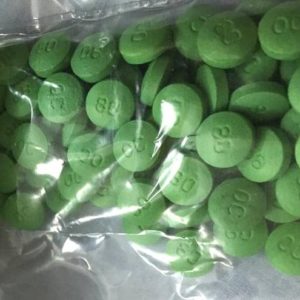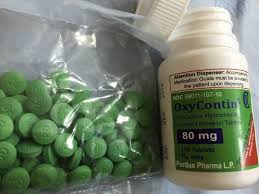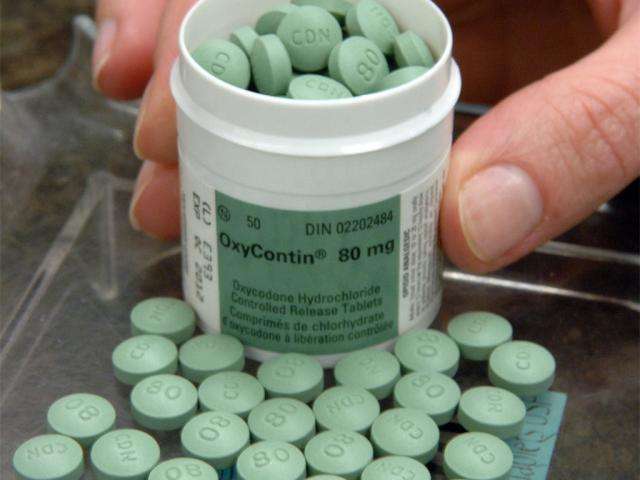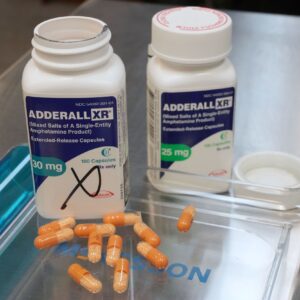Description
Buy OxyContin online 80mg
Buy OxyContin online 80mg, a brand name for extended-release oxycodone, remains a focal point in discussions about pain management and the opioid crisis. The 80mg dose, one of its strongest formulations, treats severe chronic pain but carries significant risks. This blog post explores OxyContin 80mg, covering its medical purpose, effects, risks, and role in the opioid epidemic. By presenting clear, factual information, this guide aims to answer common questions for those researching this prescription drug.
What Is OxyContin 80mg?
OxyContin 80mg contains oxycodone, an opioid analgesic, in an extended-release tablet designed for severe pain requiring continuous treatment. Introduced by Purdue Pharma in 1996, OxyContin delivers oxycodone over 12 hours, offering relief for conditions like cancer or post-surgical pain. Doctors prescribe the 80mg dose cautiously due to its potency. The drug activates opioid receptors in the brain, reducing pain perception but also causing euphoria, which contributes to its abuse potential. Only patients with opioid tolerance should use this strength, per FDA guidelines.
Medical Uses and Benefits
Doctors prescribe OxyContin 80mg for patients with severe, chronic pain unresponsive to non-opioid treatments. The extended-release formula ensures steady pain relief, improving quality of life for individuals with conditions like arthritis or terminal illnesses. Studies show oxycodone effectively manages pain when used as directed, with 80mg doses reserved for those needing high potency. The drug’s controlled release reduces the need for frequent dosing, enhancing patient convenience. However, strict medical supervision prevents misuse. For some, OxyContin enables daily functioning despite debilitating pain. Patients must follow prescribing instructions to minimize risks.
Risks and Side Effects
OxyContin 80mg poses significant risks, including addiction, overdose, and death. Common side effects include drowsiness, constipation, nausea, and dizziness. Serious risks involve respiratory depression, especially if misused or combined with alcohol or sedatives. The 80mg dose, due to its high potency, increases these dangers. X posts highlight user experiences, noting dependency after short-term use. The FDA’s black box warning emphasizes addiction and overdose risks, requiring patient education. Misuse, such as crushing tablets for immediate release, heightens euphoria but risks fatal overdose. Doctors monitor patients closely to mitigate these dangers.
OxyContin and the Opioid Crisis
OxyContin 80mg played a central role in the opioid crisis. Purdue Pharma’s aggressive marketing in the 1990s downplayed addiction risks, leading to widespread prescriptions. By 2001, OxyContin fueled rising opioid overdoses, with X posts citing 400,000 deaths linked to prescription opioids. The 80mg dose, easily misused, contributed to this epidemic. Legal actions followed, with Purdue paying billions in settlements. In 2010, a reformulated OxyContin reduced abuse potential, but illicit use persists. Policymakers now prioritize stricter regulations and alternative pain treatments. The crisis underscores the need for cautious prescribing.
Current Status and Regulations
The FDA tightly regulates OxyContin 80mg, restricting it to opioid-tolerant patients. The 2010 reformulation makes tablets harder to crush, deterring abuse. Prescriptions require Risk Evaluation and Mitigation Strategies (REMS), ensuring patient education. Many states limit opioid prescriptions to seven days for acute pain. X posts note ongoing black-market sales, with 80mg pills fetching high prices. Purdue Pharma’s 2020 bankruptcy and legal settlements reflect accountability efforts. Doctors now explore non-opioid pain management, reducing OxyContin’s use. Patients must consult healthcare providers to assess risks before starting treatment.








Reviews
There are no reviews yet.